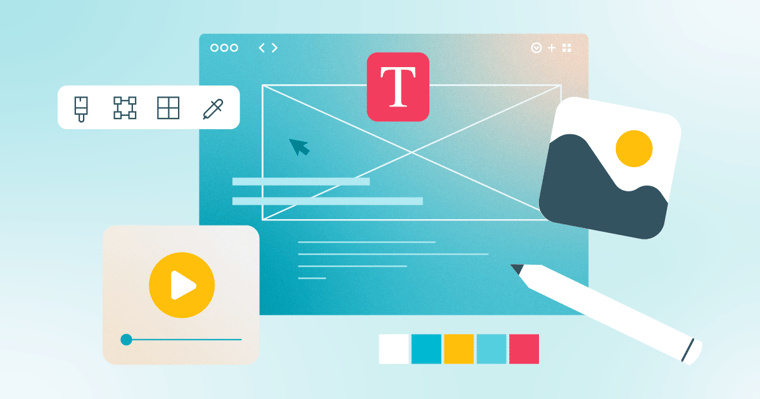How to Maintain Brand Consistency in Customized Proposals
July 23, 2024Last updated on October 1, 2024

Maintaining brand consistency in proposals can be tricky. Often, in the rush to tailor proposals to specific prospects and get them sent out before the deal goes cold, sales teams may unintentionally deviate from their established brand voice, style and guidelines.
The results are disjointed, disparate proposals that are, well, all over the place, leading to confusion and a lack of trust on the prospects' parts. And that, in turn, can lead to losing the deal altogether, putting a dent in the rep's reputation and the company's revenue.
That loss of consistency can occur in a few ways.
How Brand Consistency is Lost in Customization
One common issue is the use of varied tones and language. Individual team members may interpret the brand's voice differently or prioritize prospect preferences over the brand's style, leading to inconsistencies. For example, one proposal might be formal and professional, while another is casual and conversational. This can confuse prospects and dilute the brand’s image.
Visual elements are another area where consistency can be lost. Customizing proposals often means altering templates, colours, fonts, and logos to suit prospect tastes. However, without strict guidelines, these changes can stray too far from the brand’s established visual identity. This can make proposals look disjointed and unprofessional.
In the end, the messaging can become fragmented. Tailoring proposals might lead to emphasizing different aspects of the brand's values and offerings in each proposal.
While it's important for proposals to focus on prospect-specific needs, too much tailoring and not enough consistency in messaging can weaken the brand’s overall narrative, making it harder for prospective customers to understand and remember what the brand stands for.
Even worse, inconsistency in the brand experience part may affect how the prospect views what it would be like to work with your company. If the proposal contains a lack of attention to detail, is unprofessional, and doesn't demonstrate expertise, the prospect may conclude those attributes apply to the company as a whole.
That impression can have a negative effect on close rates, which makes maintaining brand consistency all the more important.
How to Maintain Brand Consistency
Ensuring a balance between customization and brand consistency requires clear guidelines, regular training, and a cohesive strategy that all team members understand and follow. And that strategy can be created even more easily with proposal software like Proposify and its brand-preserving features.
Create and Leverage Templates
Templates serve as a reliable foundation that ensures all your proposals start with a uniform structure, look, and feel. By designing templates that incorporate your brand's colours, fonts and logos, you set a consistent brand style from the get-go.
When your team uses templates, they're not starting from scratch for every proposal, which saves time and reduces the risk of deviating from your brand guidelines. With Proposify, templates can also include customizable, pre-written, pre-approved components the rep simply plugs into the proposal, ensuring that while the content is tailored, the presentation remains cohesive.
It's important to keep your templates up-to-date and ensure they stay aligned with your current branding. Regularly reviewing and refining them will help maintain their effectiveness. Sharing the approved templates with your team and providing training on how to use them will further reinforce brand consistency across all proposals.
With well-crafted templates, you can strike the perfect balance between personalization and a strong, unified brand identity.
Lock Proposal Sections
By locking certain sections of your company's proposals, you ensure that key elements of your brand’s identity remain untouched, regardless of who is customizing the document.
Start by identifying the core sections that define your brand, such as the introduction, company overview and brand values. Lock these sections so they remain consistent in every proposal. This will preserve the integrity of your brand's voice, tone and messaging, giving prospective customers a clear and unified impression of who you are.
Locked sections can also include pre-approved visuals like logos, headers and footers. Keeping these elements consistent across all proposals reinforces your brand’s visual identity, making your documents instantly recognizable to all prospects and stakeholders.
When locking sections, leave room for flexibility in other areas where reps can tailor the proposal to each prospect's specific needs. With Proposify, reps can drag and drop pre-approved elements such as case studies, graphics and product descriptions from the content library.
This balance will allow your team to personalize content without compromising brand consistency.
Implement an In-Tool Approval Process
This process involves using software like Proposify that allows for the creation, editing and approval of proposals within a single platform. By building an automated approval process directly into the tool, you can ensure that every proposal meets your brand standards before it reaches the prospect.
Proposify offers features like version control, real-time collaboration and approval workflows. Team members can draft and customize proposals while senior staff or brand managers review and approve them. This step ensures that the final document adheres to your brand’s voice, style and visual guidelines.
An in-tool approval workflow also streamlines communication, reducing the risk of misunderstandings or overlooked brand elements. It provides a clear, efficient way to catch inconsistencies and make necessary adjustments.
By fostering a culture of collaboration and accountability, you’ll maintain a strong, consistent brand identity across all customized proposals, making a lasting impression on your future customers.
How Abdo Created Brand Consistency with Proposify
Companies with geographically separated locations experience even more difficulty in maintaining brand consistency in their proposals. Without an overarching solution, each location develops their own way of doing things, including creating proposals.
This was a challenge faced by Abdo, an accounting firm with two locations in Minnesota and one in Arizona. They were all using combinations of Word, Excel and PowerPoint to create their proposals. Updating old templates was a tedious task, and there was no system in place to track changes, so no two proposals looked alike.
"Our old process was very clunky," said Elly Ohnstad, Abdo's marketing and design specialist.
It was very much, 'Grab that old PowerPoint from three years ago, and update it.' … And it wasn't easy to maintain brand consistency.
By using Proposify, Abdo was able to streamline their proposal creation process, maintain brand consistency, and save time and money. About switching to Proposify, Abdo's administrative supervisor, Tomi McDonald, said,
"I don't think people understand the cost savings … because everyone's still doing it in Word or PowerPoint or whatever else they can think of to get these things done."
Preserve Your Branding with Proposify
Want to present a unified brand, no matter who creates the proposal? Consider Proposify. It has all the features your team needs to build and maintain templates, lock down certain features, and centralize the approval process. Our proposal software gives you total control and visibility into your proposal process, from start to finish. Most importantly, it can help your business save time and money.
Schedule a demo today, and see how you can streamline and add consistency to the entire sales process.

Michelle Lowery is a B2B and B2C writer and editor with more than 15 years of experience. She believes empathy is the key to high-performance content. Connect with her on LinkedIn:


